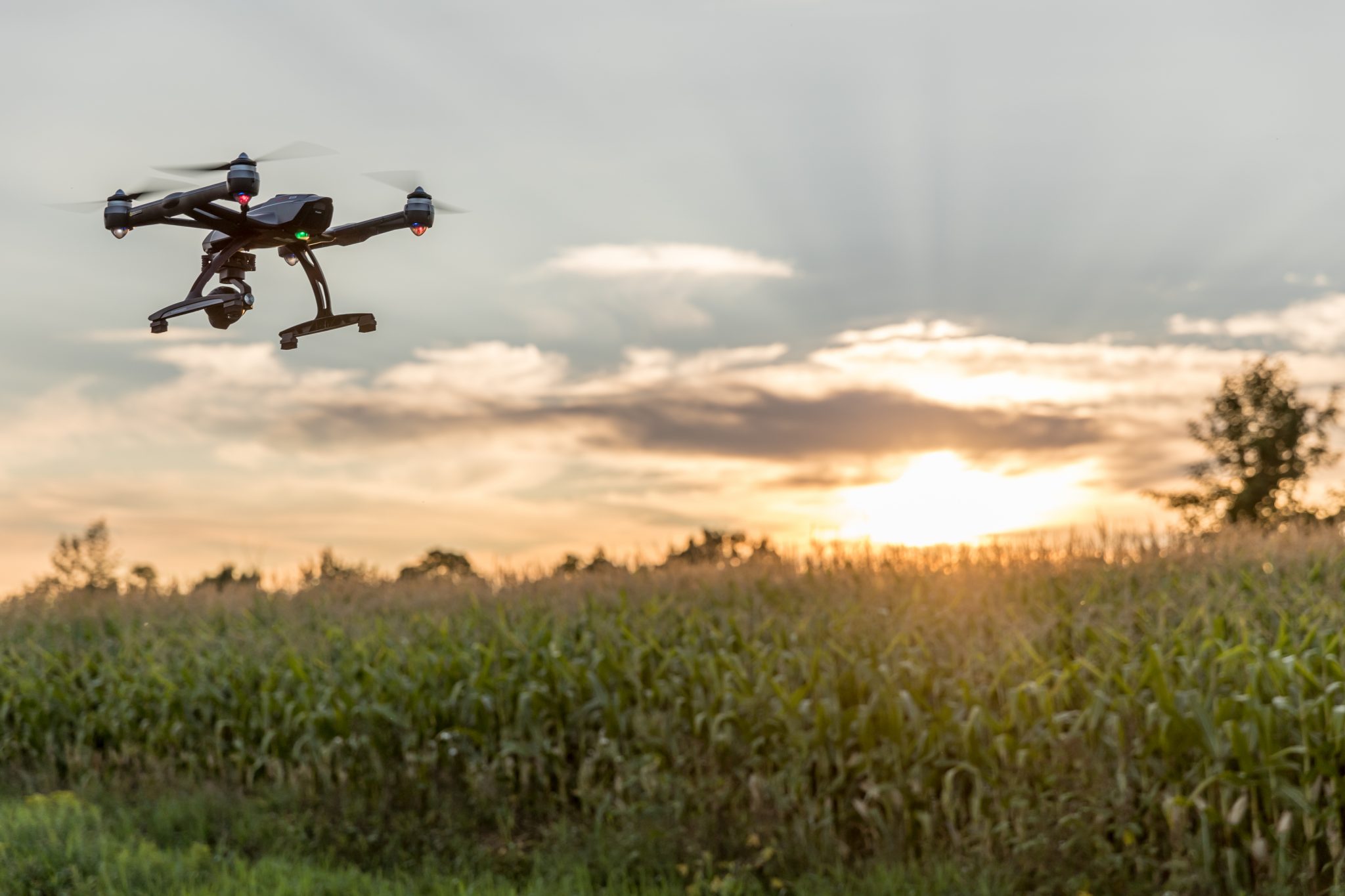Many farmers face the same problem: how to efficiently produce crops to a tight margin while also being sustainable and protecting the environment. Key to this is getting the agronomy right, knowing when, where and how best to tackle problems at the same time as ensuring any actions have a minimal impact on the environment, and increasingly, reduce greenhouse gas (GHG) emissions.
While there have been changes in legislation and in the way farmers and agronomists assess risk, the technology we use on farm to apply crop protection products has largely remained the same with an operator in the cab of a 24- or 36-meter sprayer, guided by an agronomist’s spray sheet for the whole field.
Are things about to change? Could the future include fleets of drones buzzing over fields to spray specific product in specified areas?
What are drones?
Drones are unmanned aerial vehicles (UAVs) typically propelled – vertically and horizontally – by up to eight rotors. The inclusion of imaging systems, GPS, radar and other technologies enables them to autonomously navigate pre-determined routes in fields and, crucially, avoid obstacles such as trees or poles.
Scouting
A key role for drones is in the scouting of crops, enabling agronomists or farmers to have a birds-eye view to spot problems. This can be achieved using low-cost drones with RGB cameras, or through additional technologies such as multi- and hyper-spectral imaging, capable of seeing stress in the crop earlier than is possible with the naked eye. This can also be combined with additional data from satellite imagery or technologies such as artificial intelligence (AI) to build up a picture of the crop and any potential problem areas.
Product application
Scouting was perhaps the first application for drones in agriculture, but as the technology has advanced we’ve seen payloads increase substantially. Today drones can routinely carry 10s of kilos or liters of product, enabling them to be used for routine applications to tall/thick crops, as a targeted measure for a problem area, or even to surface seed crops quickly. They also offer more flexibility being able to go out into fields when conditions are too wet for tractors or sprayers to be used without getting stuck, making a mess or damaging soils, although prevailing winds will always have to be taken into consideration.
Hurdles
Drones do have potential for farmers, but they are not the solution to all the issues faced by the industry. Even if they were, their usage in the UK is limited at present. For example, anyone wishing to operate a drone must seek authorisation from the Civil Aviation Authority. This entails additional training, licensing, risk assessments and other regulatory processes, which an individual farmer/agronomist may find difficult to undertake. However, there are service providers in the UK that can undertake this work for you, and also discuss the best option available for your situation.
The next hurdle is that of what to use and how, with few crop protection products approved, or even tested, for use in drone systems. And from a purely practical point of view, the use of nozzles, screws or spinning disc applicators can provide a problem in uniformly applying products, particularly when considering spray drift caused by rotor down draft. Such problems need to be overcome before we can expect to see drones replacing crop sprayers.
Opportunities for drones in agriculture
Despite these challenges, drones certainly have a future role in UK agriculture, as demonstrated by their usage and uptake globally.
Perhaps the best way forward is not to position the drone as a potential replacement for sprayers, but rather to think of them as complementary tools working in synergy. Drones have a role to play in informing block or variable rate application maps, as a result of improved crop scouting and monitoring. They could even have potential to cost effectively ‘nip out’ and treat that small or difficult to reach problem area; perhaps even with a biopesticide or other alternative as the costs of inputs stack up.
Whatever the future holds, it is clear that drones will increasingly be part of the agricultural landscape for some time to come.
Please note, the opinions expressed in this article are the author’s own and do not necessarily reflect the views or opinions of CHAP.
For information on CHAP’s work on crop protection and precision agriculture, go to Advanced Glasshouse Facility, Field Scale Precision Equipment, and Fungal Biopesticide Development Lab also see our article on the CHAP crop research track sprayer, Integrating regen ag into modern agronomy and Regenerative agriculture: a vision for the future.
If you have a project idea or want to find out how you can work with CHAP, please send us an email using the enquiries form at the bottom of our homepage.












